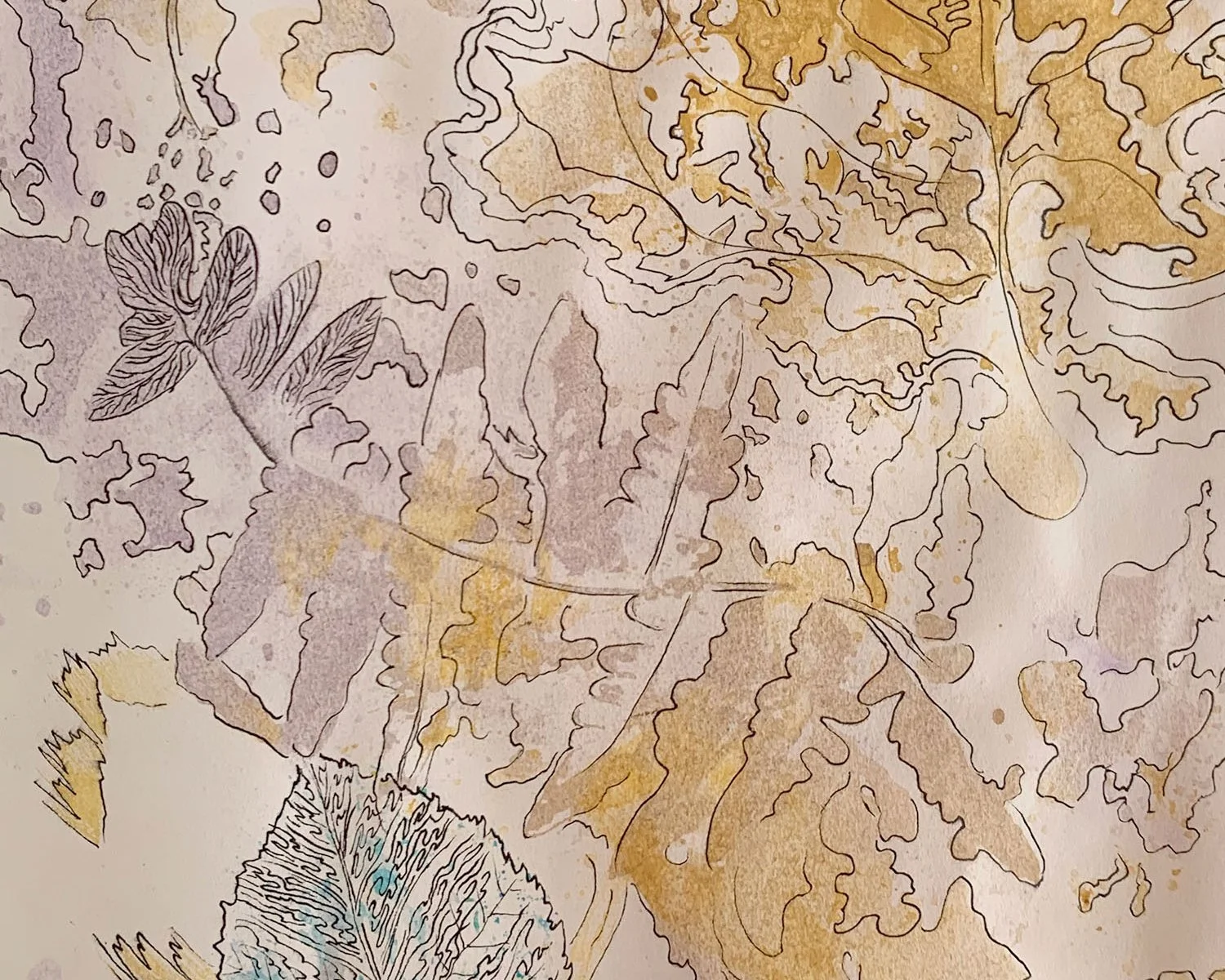
Documenting the Ever-Changing Story of Plants
Woodland Leaf & Flower Prints
About the Prints & the Leaf Library
Watercolor & Ink
This Leaf & Flower Print series features leaves, wildflowers, and flora gathered from my woodland lot in northern Wisconsin. Preserved in a “Leaf Library,” this pressed herbage is sorted and stored in an archive of tree leaves and wildflowers found within this markedly unique woodland lot. As the Leaf Library grows, some leaves and flowers are used to create artwork and some are preserved. The collection and preservation process helps deepen my connection with the local plant-life and learn more about them when they are abundant enough to harvest. The Leaf Library preserves an ecological story of place during this specific moment in time as the climate heats and life in this natural environment shifts.
Watercolor. Pipsissewa, partrideberry, club moss, haircap moss.
Leaf and flower print. Bracken, aspen, maple.
Leaf and flower print. Bracken, butterfly weed, oxeye daisy, wild geranium.
Leaf and flower print. Bracken, butterfly weed, oxeye daisy, wild geranium.
Leaf and flower print. Bracken, birch.
Leaf and flower print. Bracken, oak hybrid.
The St. Croix Pine Barrens
Woodland On the Namekagon River
While it is a young forest, the surrounding ecosystem is supportive of a thriving habitat including ruffed grouse, black bears, red lynx, wolves, coyotes, Blanding’s turtle, flying squirrels, and fireflies (a unique type I’ve never encountered before). With many large, felled trees from a decade-old storm, the woodland is rich with lichen, clubmoss (a fern ally), bracken, mushrooms, red pine, white oak, (also oak hybrids, perhaps), ironwood, birch, and aspen. Except for the hand-cut trails and new clearing for a driveway and future studio, the lot has not been altered in many years. Perhaps a hundred or more large trees are breaking down on this small lot, which also contributes to its habitat, rich with plants common to the area — and a few species of concern.
This woodland lot is surrounded by county forest and abuts NPS land along the Namekagon River, a federally-protected Wild & Scenic River, which also influences its ecosystem. Possibly because of its unique enclosure, I have yet to discover any invasive species. The lot is just a few miles from the Namekagon Barrens Wildlife Area (NBWA), a globally rare Pine and Oak Barrens with ecological importance that supports oak grubs, sweet fern, blueberry, forbs, and an open bog with elements of Poor Fen. Though my lot has quite a different from the landscape of the SNA, I wonder what elements it might have in common and sometimes field trip to compare.






